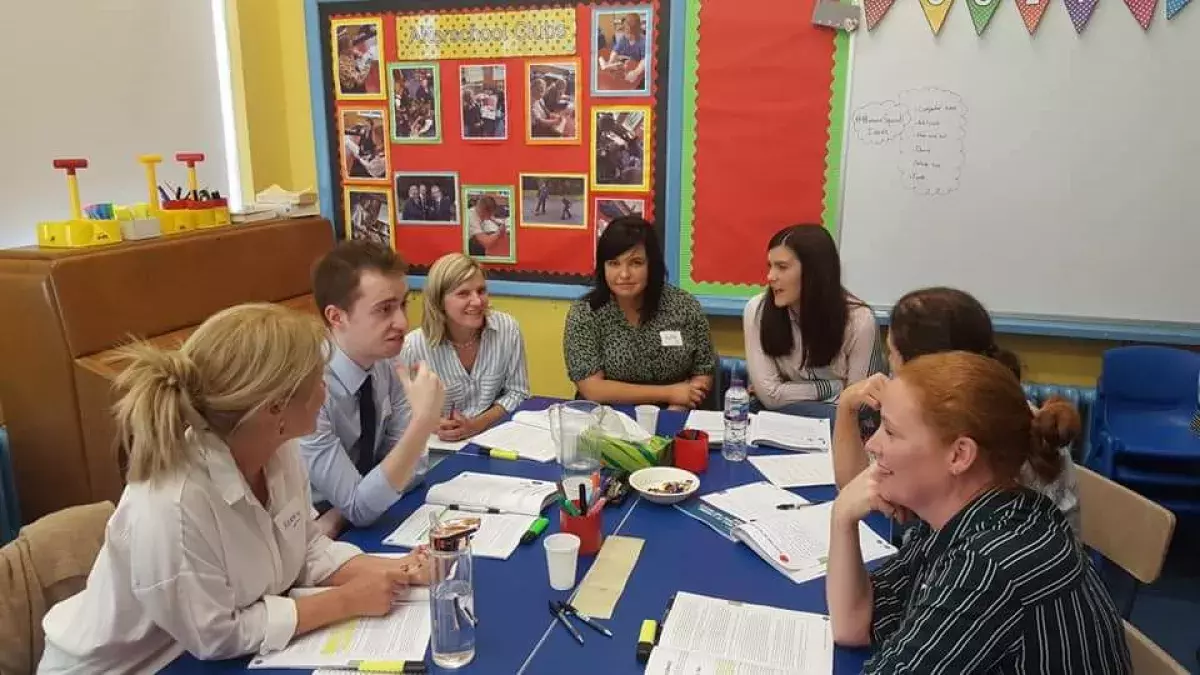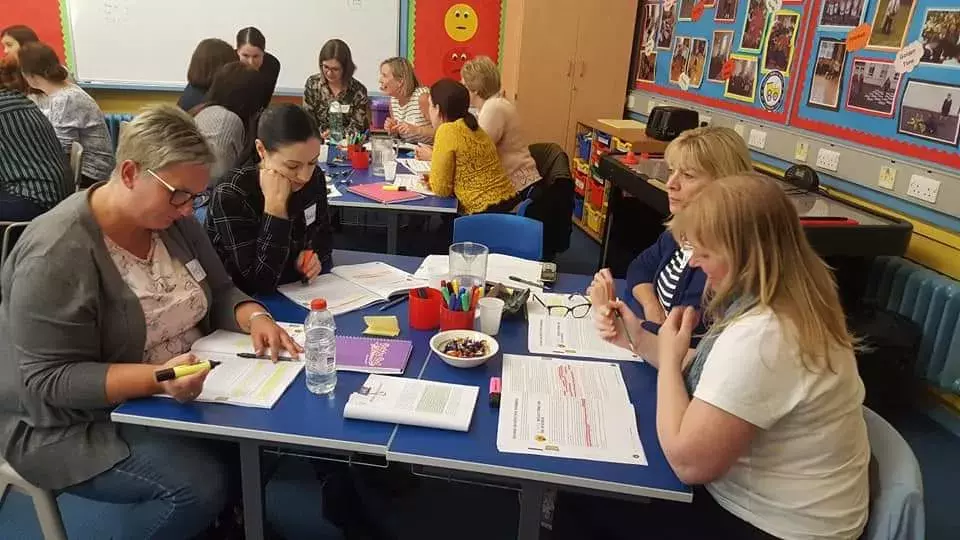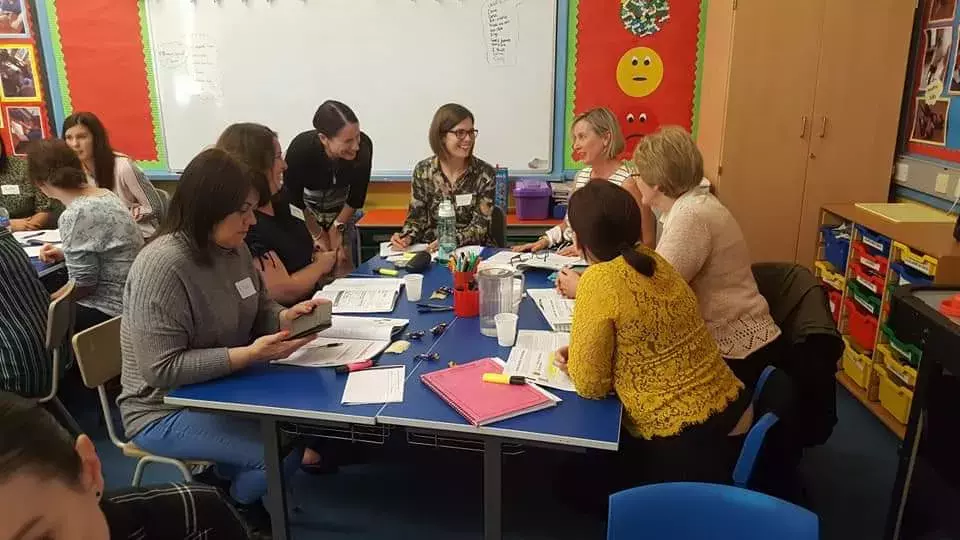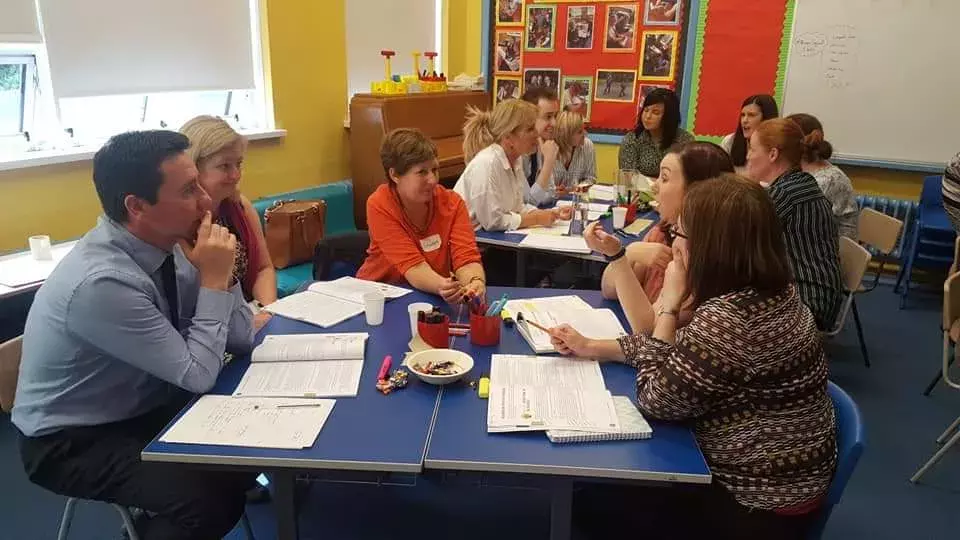- About us
- Schools
- Area planning
- Find your Schools’ Support Officer
- Best practice case studies
- Funding opportunities
- School vacancies
- Shared education
- #OpenToAll
- CSSC Award in Excellence in Educational Research
- Erasmus+
- CSSC Membership Survey 2022 – Results
- CSSC Sign Language programme - engaging with sign, a language for you and me
- Governors
- News
- Events
- Publications
- Ethos
- #OpenToAll
- Contact
- Search
How are you doing?
How many times do we ask others that question but never really hear their answer?

Staff in Killylea Primary School are keen to change that. This year, they have been working alongside their shared education partnership schools – Drumsallen Primary School, and Our Lady’s Primary School, Tullysaren. Staff are developing a collaborative learning ethos between the schools, focussing on effective feedback.
The partnership was successful in gaining Stage 2 funding from the CASE programme, which is supported by the European Union’s PEACE programme and managed by the Special EU Programme Body.
The Stage 2 funding is designed to enable a joint research led enquiry project. Staff from all three schools hope the project will help them accelerate progression of learners through an effective feedback culture.
Killylea Primary School’s Principal, Pam Lowry, explained that last year she attended a Principal’s Learning Conference organised by the Education Authority and hosted by Professor John Hattie from Melbourne. His research argues that feedback is arguably the most powerful and critical aspect to teaching and learning.
Leadership and management from all three partnership schools had identified feedback as an area of development within their respective School Development Plans, and following initial research of other models, agreed to trial John Hattie’s approach.
Last month 20 teachers and classroom assistants came together to learn more about John Hattie’s Instructional Model of Feedback. They were the first schools in Northern Ireland to avail of the training. The key learning was that while teachers spend a considerable amount of time and experience stress writing comments in pupils’ books, the comments are either ignored or pupils only look for the grade or mark. There had to be a more effective way!
In order to work smarter and more effectively, staff are now focussing on:
- in-lesson, verbal feedback
- celebration of error as a positive teaching tool
- increased pupil to teacher feedback (pupil voice)
- changes to teaching to reflect identified pupil needs.
An interesting fact we discovered was that 80% of pupil to pupil feedback was incorrect! Pupils need significant modelling to give effective feedback to each other.
At Killylea, staff are already seeing improvements in children’s confidence and ability to talk about strategies used, errors made and how to improve. Staff focus less on praise and more on giving feedback which provides pupils with the next steps in their learning to close the gap between their learning goal and where they currently are.
More time is now spent on planning than marking, to ensure clear and concise learning intentions with co-constructed success criteria so that pupils have more ownership of their learning. Lessons are punctuated with in-lesson feedback and a gallery session to support pupils in what “good” looks like.
Next term, staff are planning to initiate cross-school peer classroom observations to support each other’s professional development and learn from different approaches.
So, the next time staff ask a pupil “How are you doing?” they will expect a very comprehensive answer and will act on it!
21 October 2019


